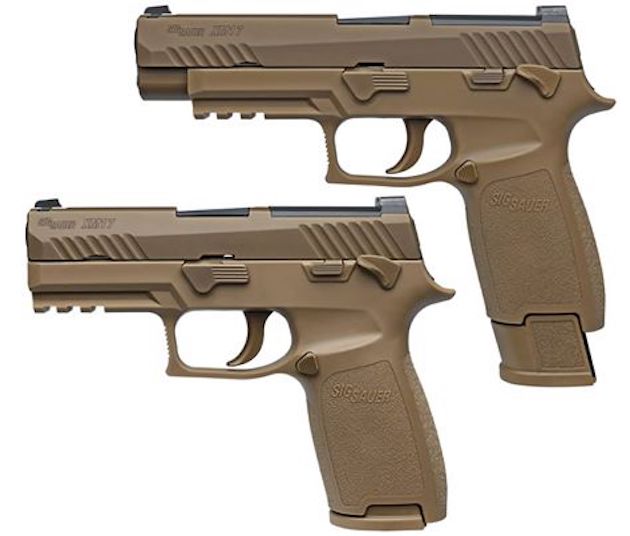The U.S. Army has been looking for an alternative to the Colt 1911 for decades. The Beretta M9 filled the role for more than 30 years, but the search never really ended, eventually leading to submissions from Beretta, Glock, Smith & Wesson, and others in a recent effort that spanned several years and cost millions of dollars.
Now, at long last, the decision has been made: The Army will field the Sig Sauer P320 as part of a new $580 million contract. The deal will provide firearms and accessories to the military over the course of the next decade, with the initial contract fulfillment estimated at $100 million alone.
The Army Times announced the decision Thursday. The contract will provide a replacement to the branch’s Berettas, which have been the Army’s standard service pistol since 1985. Like its predecessor, the Sig will be chambered in 9mm, as the round is still the NATO standard and ammunition is already available for the military’s use.
The P320 features a striker-fired, polymer design that accepts interchangeable grip modules. Forbes reports that the Army’s version will accept suppressors and will ship with standard and extended-capacity magazines. The pistols will be made at Sig Sauer’s factory in Exeter, New Hampshire.
The contest itself, which officially began in 2014, was the stuff of bureaucratic nightmares—it cost $17 million and featured a book of guidelines with more than 300 pages in it. General Mark Milley, speaking in March 2016, summed up the feelings of many when he said, “We’re not figuring out the next lunar landing. This is a pistol. Two years to test? At $17 million? You give me $17 million on a credit card and I’ll call Cabela’s tonight, and I’ll outfit every soldier, sailor, airman, and Marine with a pistol for $17 million. And I’ll get a discount on a bulk buy.”
After multiple delays, the final deadline for prototype submission was set at February 2016. Twelve candidates were fielded, but by December the field had been narrowed to just Glock and Sig Sauer. While the Army’s Green Berets regularly use Glocks, and while the Glock 17 and Glock 19 were both submitted as candidates, the Army ultimately selected the P320.
Beretta tried to field an updated version of the M9, the M9A3, but was reportedly barred from competition by the Army.
The military will certainly see changes as a result of the pistol’s adoption, but others wonder what effect this selection will have on civilian/police weapon choices. Forbes contributor Frank Miniter opined that the Army’s decision might lead police forces to swap their Glocks for Sigs. The military often influences the buying decisions of America’s shooters, so just like the M16 led to the prevalence of the AR-15, the P320’s official standing with the Army may lead more shooters to purchase it in the civilian sector.
The Sig’s competitors are none too happy about their loss. Questions as to what the final results of the competition were, what the number of rounds between failures were, and what political motivations, if any, affected the decision have already been asked. Whether the P320’s selection will be contested remains to be seen, but for all intents and purposes, the Sig Sauer is the Army’s new sidearm.

